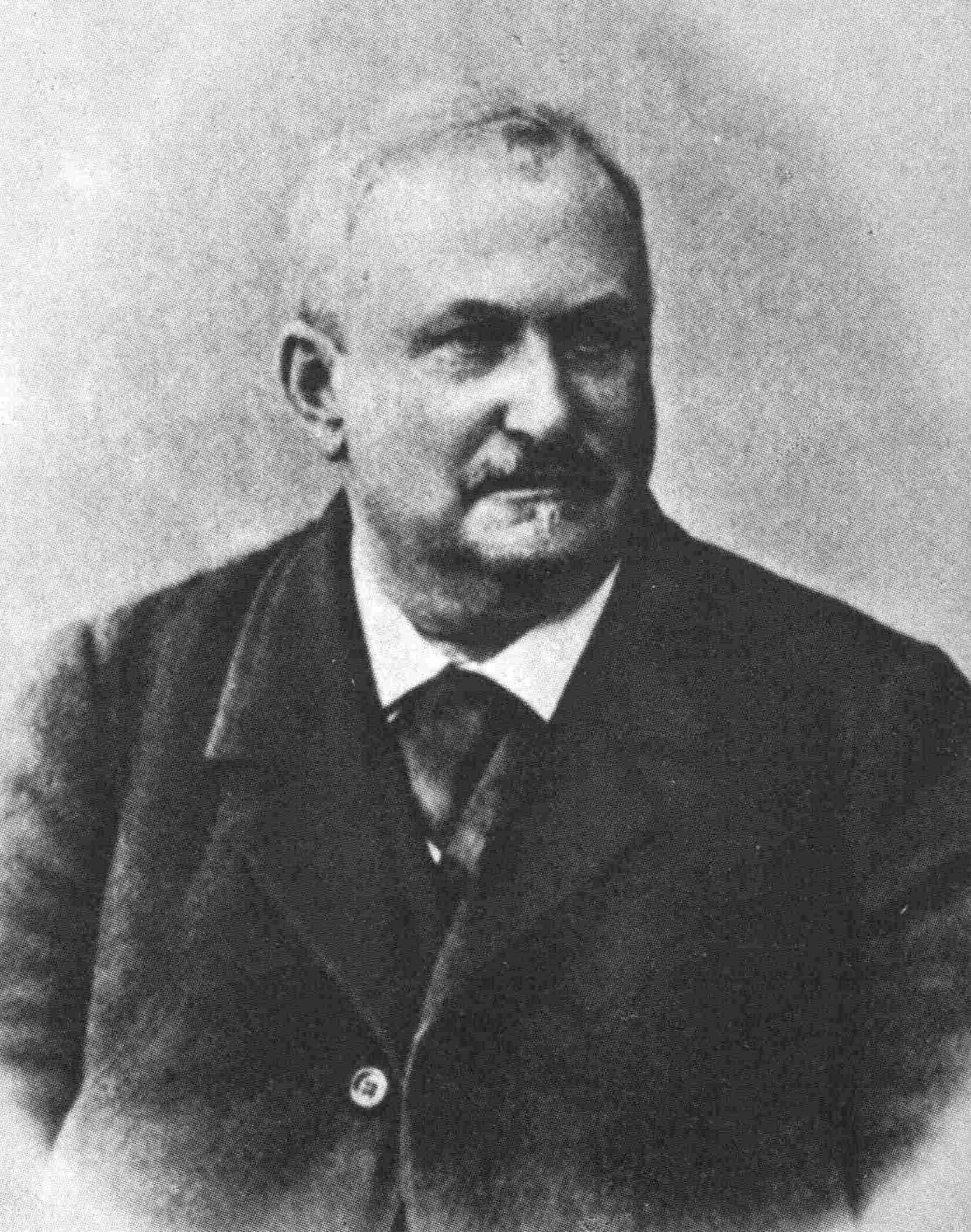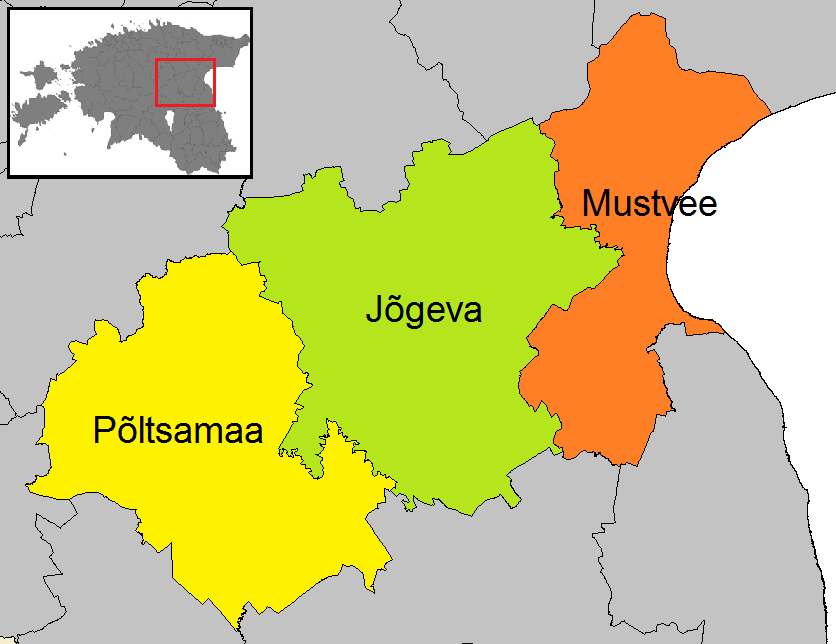|
Võisiku
Võisiku is a village in Põltsamaa Parish, Jõgeva County, in central Estonia. It is located about 5 km southwest from the town of Põltsamaa. Võisiku has a population of 376 (as of 2010). Võisiku Manor Võisiku estate (german: Woiseck) was first mentioned in 1558. The current building was constructed in the second half of the 18th century. A veranda was added at a later date. Timotheus Eberhard von Bock (1787-1836), about whom Jaan Kross has written one of his most well-known novels, ''The Czar's Madman'', lived at Võisiku manor. Chess player and endgame composer Friedrich Amelung Friedrich Ludwig Balthasar Amelung ( – ) was a Baltic German cultural historian, businessman and chess endgame composer. Amelung was born at Võisiku (german: Woiseck) manor in Governorate of Livonia of the Russian Empire (present-day Jõgeva ... was born at Võisiku Manor in 1842. References External linksVõisiku Manorat Estonian Manors Portal Villages in Jõgeva County ... [...More Info...] [...Related Items...] OR: [Wikipedia] [Google] [Baidu] |
Põltsamaa Parish
Põltsamaa ( et, Põltsamaa vald) is a rural municipality of Estonia, in Jõgeva County. It has a population of 2722 (2001) and an area of 416.9 km² (161.0 mi²). Populated places Põltsamaa Parish has one town, 3 small boroughs, and around 60 villages. ; Towns Põltsamaa ; Small boroughs Adavere - Kamari - Puurmani ; Villages Aidu - Alastvere - Altnurga - Annikvere - Arisvere - Esku - Jüriküla - Kaavere - Kablaküla - Kalana - Kaliküla - Kalme - Kauru - Kirikuvalla - Kõpu - Kõrkküla - Kose - Kuningamäe - Kuris - Laasme - Lahavere - Lebavere - Loopre - Luige - Lustivere - Mällikvere - Mõhküla - Mõisaküla - Mõrtsi - Neanurme - Nõmavere - Nurga - Pajusi - Pauastvere - Pikknurme - Pilu - Pisisaare - Pudivere - Puduküla - Puiatu - Räsna - Rõstla - Sopimetsa - Sulustvere - Tammiku - Tapiku - Tõivere - Tõrenurme - Tõrve - Umbusi - Uuevälja - Vägari - Väike-Kamari Väike-Kamari is a settlement in Põl ... [...More Info...] [...Related Items...] OR: [Wikipedia] [Google] [Baidu] |
Friedrich Amelung
Friedrich Ludwig Balthasar Amelung ( – ) was a Baltic German cultural historian, businessman and chess endgame composer. Amelung was born at Võisiku (german: Woiseck) manor in Governorate of Livonia of the Russian Empire (present-day Jõgeva County in Estonia). 1862–1864 he studied philosophy and chemistry at the University of Dorpat. 1864–1879 and 1885–1902 he was the director of the Rõika-Meleski mirror factory which he inherited from his father. Amelung published writings about the culture and history of Estonian localities like Viljandi, Tallinn and Põltsamaa. Amelung was known as a chess player and a famous chess quiz's author. 1879–1885 he lived in Reval (now Tallinn) and studied the chess history of the Baltics. Between 1888 and 1908 he edited the chess magazine ''Baltische Schachblätter''. In 1898 he established the Baltic Chess Society. Amelung published about 230 endgame studies, making him the first chess historian in the Baltic States. He played a few ... [...More Info...] [...Related Items...] OR: [Wikipedia] [Google] [Baidu] |
Populated Places In Estonia
Populated places in Estonia (officially: settlement units), are cities or settlement units of rural municipalities, but only cities have administrative functions. Settlement units are divided into settlements and urban regions et, asum (subdivisions of cities). Officially there are five types of settlement units in Estonia: *town/city ( et, linn) *town without municipal status () *borough () *small borough () *village () See also * Municipalities of Estonia *List of cities and towns in Estonia *Counties of Estonia Counties ( et, maakond, plural ') are the first-level administrative subdivisions of Estonia. Estonian territory is composed of 15 counties, including 13 on the mainland and 2 on islands. The government (') of each county is led by a ' (gover ... Notes External links Place Names Board of Estonia [...More Info...] [...Related Items...] OR: [Wikipedia] [Google] [Baidu] |
List Of Sovereign States
The following is a list providing an overview of sovereign states around the world with information on their status and recognition of their sovereignty. The 206 listed states can be divided into three categories based on membership within the United Nations System: 193 UN member states, 2 UN General Assembly non-member observer states, and 11 other states. The ''sovereignty dispute'' column indicates states having undisputed sovereignty (188 states, of which there are 187 UN member states and 1 UN General Assembly non-member observer state), states having disputed sovereignty (16 states, of which there are 6 UN member states, 1 UN General Assembly non-member observer state, and 9 de facto states), and states having a special political status (2 states, both in free association with New Zealand). Compiling a list such as this can be a complicated and controversial process, as there is no definition that is binding on all the members of the community of nations concerni ... [...More Info...] [...Related Items...] OR: [Wikipedia] [Google] [Baidu] |
Counties Of Estonia
Counties ( et, maakond, plural ') are the first-level administrative subdivisions of Estonia. Estonian territory is composed of 15 counties, including 13 on the mainland and 2 on islands. The government (') of each county is led by a ' (governor) who represents the national government (') at the regional level. Governors are appointed by the national government for a term of five years. Each county is further divided into municipalities of two types: urban municipalities (towns, ') and rural municipalities (parishes, '). The number and name of the counties were not affected. However, their borders were changed by the administrative reform at the municipal elections Sunday 15 October 2017, which brought the number of municipalities down from 213 to 79. List Population figures as of 1 January 2021. The sum total of the figures in the table is 42,644 km2, of which the land area is 42,388 km2, so that 256 km2 of water is included in the figures. History In the first ... [...More Info...] [...Related Items...] OR: [Wikipedia] [Google] [Baidu] |
Jõgeva County
Jõgeva County ( et, Jõgeva maakond or ''Jõgevamaa'') is one of 15 counties of Estonia. It is situated in eastern part of the country and borders Ida-Viru County to the north-east, Lake Peipus to the east, Tartu County to the south, Viljandi County to the south-west, Järva County to the north-west and Lääne-Viru County to the north. History Jõgeva County or Jõgevamaa was created January 1, 1990 from a parts of Viljandimaa and Tartumaa counties. County government The County government (Estonian: ''Maavalitsus'') was led by a governor (Estonian: ''maavanem''), who was appointed by the Government of Estonia for a term of five years. Since 2009 until 2018, the Jõgeva County governor position was held by Viktor Svjatõšev. From 01.01.2018 County governments were shut down in Estonia. Municipalities The county is subdivided into municipalities. There are three rural municipalities (Estonian: ''vallad'' – parishes) in Jõgeva County. See also *Vooremaa *Vooremaa ( ... [...More Info...] [...Related Items...] OR: [Wikipedia] [Google] [Baidu] |
Municipalities Of Estonia
A municipality ( et, omavalitsus, plural ) is the smallest administrative subdivision of Estonia. Each municipality is a unit of self-government with its representative and executive bodies. The municipalities in Estonia cover the entire territory of the country. Municipalities in Estonia are of two types: *Urban municipalities or towns (, singular ) *Rural municipalities or Parish (administrative division), parishes (, singular ). There is no other status distinction between them. Municipalities may contain one or several Populated places in Estonia, settlements. All but 5 urban municipalities (Haapsalu (urban municipality), Haapsalu, Narva-Jõesuu (urban municipality), Narva-Jõesuu, Paide (urban municipality), Paide, Pärnu (urban municipality), Pärnu and Tartu (urban municipality), Tartu) plus 1 rural municipality (Ruhnu Parish, Ruhnu) contain only one settlement. As of 2017, there are no longer any "borough-parishes", i.e. rural municipalities with only one borough-typ ... [...More Info...] [...Related Items...] OR: [Wikipedia] [Google] [Baidu] |
Põltsamaa Valla Lipp1
Põltsamaa (german: Oberpahlen) is a town in Põltsamaa Parish, Jõgeva County, Estonia. The town is situated on the Põltsamaa River, and features a 13th-century castle. Gallery Põltsamaa Jõgi.jpg, Põltsamaa River Põltsamaa Vabadussõja mälestussammas.JPG, Monument to the Estonian War of Independence Põltsamaa Felixi kontorihoone.jpg, Põltsamaa Felix Põltsamaa (german: Oberpahlen) is a town in Põltsamaa Parish, Jõgeva County, Estonia. The town is situated on the Põltsamaa River, and features a 13th-century castle. Gallery Põltsamaa Jõgi.jpg, Põltsamaa River Põltsamaa Vabadussõja m ... is the biggest local employer Põltsamaa kalmistu.JPG, Põltsamaa cemetery References External links Former municipalities of Estonia Cities and towns in Estonia Populated places in Jõgeva County Kreis Fellin {{Jõgeva-geo-stub ... [...More Info...] [...Related Items...] OR: [Wikipedia] [Google] [Baidu] |
Estonia
Estonia, formally the Republic of Estonia, is a country by the Baltic Sea in Northern Europe. It is bordered to the north by the Gulf of Finland across from Finland, to the west by the sea across from Sweden, to the south by Latvia, and to the east by Lake Peipus and Russia. The territory of Estonia consists of the mainland, the larger islands of Saaremaa and Hiiumaa, and over 2,200 other islands and islets on the eastern coast of the Baltic Sea, covering a total area of . The capital city Tallinn and Tartu are the two largest urban areas of the country. The Estonian language is the autochthonous and the official language of Estonia; it is the first language of the majority of its population, as well as the world's second most spoken Finnic language. The land of what is now modern Estonia has been inhabited by '' Homo sapiens'' since at least 9,000 BC. The medieval indigenous population of Estonia was one of the last " pagan" civilisations in Europe to adopt Ch ... [...More Info...] [...Related Items...] OR: [Wikipedia] [Google] [Baidu] |
Põltsamaa
Põltsamaa (german: Oberpahlen) is a town in Põltsamaa Parish, Jõgeva County, Estonia. The town is situated on the Põltsamaa River, and features a 13th-century castle. Gallery Põltsamaa Jõgi.jpg, Põltsamaa River Põltsamaa Vabadussõja mälestussammas.JPG, Monument to the Estonian War of Independence The Estonian War of Independence ( et, Vabadussõda, literally "Freedom War"), also known as the Estonian Liberation War, was a defensive campaign of the Estonian Army and its allies, most notably the United Kingdom, against the Bolshevik westwa ... Põltsamaa Felixi kontorihoone.jpg, Põltsamaa Felix is the biggest local employer Põltsamaa kalmistu.JPG, Põltsamaa cemetery References External links Former municipalities of Estonia Cities and towns in Estonia Populated places in Jõgeva County Kreis Fellin {{Jõgeva-geo-stub ... [...More Info...] [...Related Items...] OR: [Wikipedia] [Google] [Baidu] |
Timotheus Eberhard Von Bock
Timotheus is a masculine male name. It is a latinized version of the Greek name (Timόtheos) mmeaning "one who honours God", from τιμή "honour" and θεός "god"., . The English version '' Timothy'' (and its variations) is a common name in several countries. People *Timotheus of Miletus, 5th century BC Greek poet and musician at the court of Archelaus I of Macedon *Timotheus (general) 4th century BC, Athenian statesman and general, son of the general Conon *Timotheus (sculptor), 4th century BC Greek sculptor who took part in the building of Mausoleum of Maussollos *Timotheus of Heraclea, 4th century BC ruler of Heraclea Pontica, and the son of the tyrant Clearchus of Heraclea *Timotheus (aulist), a late 4th century BC musician at the court of Alexander the Great *Timotheus (Ammon), a 2nd century BC Ammonite opponent of Judas Maccabeus * Timotheus of Tralles, 2nd century BC, victor of the 163 Ancient Olympic Games at Stadion *Saint Timotheus, 1st century AD Christian leader ... [...More Info...] [...Related Items...] OR: [Wikipedia] [Google] [Baidu] |




